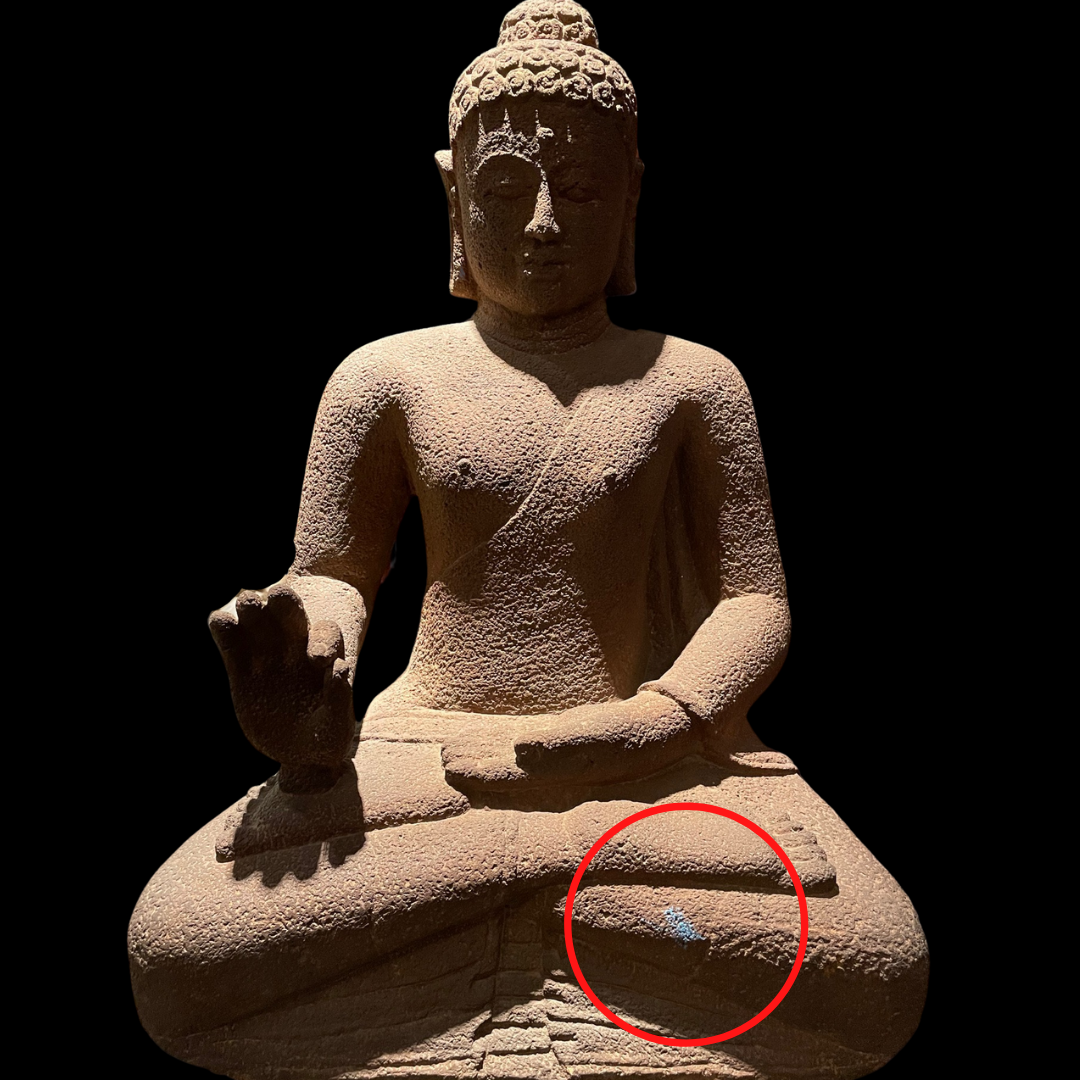Museum Etiquette: What You Can Do to Help Us Preserve Our Artifacts
July 23, 2021

Museum Etiquette: What you can do to help us preserve our artifacts
By: Kaysey Richardson and Jordan Adams
Recently, a Museum visitor used a blue crayon on a small section of one of our invaluable artifacts. While some wax was carefully removed, this item will likely never be returned to its original state. At the Museum of World Treasures, we, like all other museums, consider this to be an inappropriate breach of etiquette and are saddened to see damage such as this caused by a valued guest.
Although a small crayon marking, or even the simple act of touching an artifact with your hands, may seem insignificant, the truth is that even these actions can cause a great deal of harm. The purpose of this blog is not to scold our guests about this incident, but instead to raise awareness and help educate our future patrons about the importance of museum etiquette.
The Damage of a Crayon
If you or anyone you know has children, then you might have experienced the process of cleaning crayon marks off a wall or two. It is a challenge! Now, imagine trying to remove crayon from porous volcanic stone that is hundreds of years old without harming or taking away any of its historical significance. It is a more complicated process than one might think.
The damaged item in this situation was one of our lovely Buddha statues, this particular one being carved from dark-brown volcanic stone. Our team worked diligently to remove the marking while also maintaining its history and not causing further harm. To start, dental tools were used to take off as much wax as possible that was clinging to the porous surface. At the same time, a small brush with stiff bristles was used to dislodge and sweep away any smaller, loose bits. To deal with the wax that was further embedded within the rock surface, a special non-foaming, acid-free and non-hazardous liquid soap was mixed with water and lightly applied to the area as an emulsifier. While this process helped clean away most of the bright blue crayon, it may never be possible to entirely remove it from the artifact’s surface.
We are asking our Museum of World Treasures guests to please consider why this is a big deal to our staff. These artifacts each serve the purpose of helping tell a story about our collective past. Unlike a crayon marking on a desk, wall, or other surface, these artifacts can be extremely old and fragile. Maintenance on these items takes time and money, and must be done with extreme caution and care. In addition to the physical damage, defacing artifacts in this way is disrespectful. Many of these artifacts are sacred symbols from various cultures and religions that are here to help our Museum guests learn about our beautifully diverse world. As guests walk through our Museum, we hope they are able to appreciate the numerous items we have on display in a safe manner.
Please Do Not Touch
It is not every day that an artifact is defaced with crayon. Truthfully speaking, this may be the first time it has occurred in the Museum at all! However, nearly every day we do have guests touching our exposed artifacts. We understand the temptation to touch a piece of history, we really do! It is human nature to want to connect with something in order to gather information, see if it’s real, or simply to interact with things of the past. This is why museums often have interactive exhibits! Like other museums, we offer interactive activities, but when you see a sign that says “Do Not Touch,” remember that this sign is there for a reason.
Perhaps you are thinking, “One touch won’t hurt it”. On the contrary, our skin contains natural oils, salty sweat, and foreign dirt that can cause discoloration, attract more dust and dirt, and wear down the details of an artifact over time. The more fingerprints that accumulate, the more difficult it becomes to maintain our artifacts as the years go by. We are only able to clean our artifacts to a certain extent without removing their historical significance, such as soil from their place of origin, small flecks of paint that still clings to a statue, or intricate details carved into a soft stone.
With that being said, it is a community effort to preserve our artifacts. We rely on the respect from our Museum guests to help ensure that our artifacts are maintained and that they can continue to serve the purpose of storytelling for many more generations to come.
